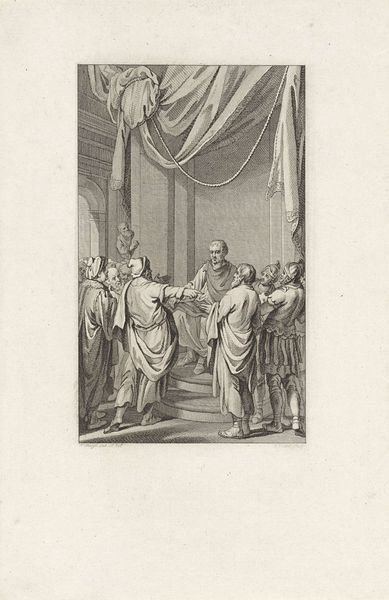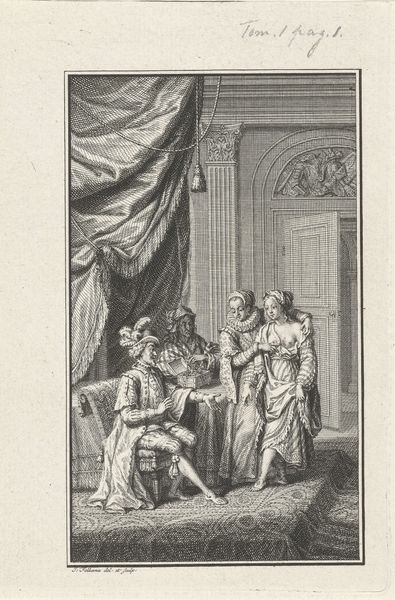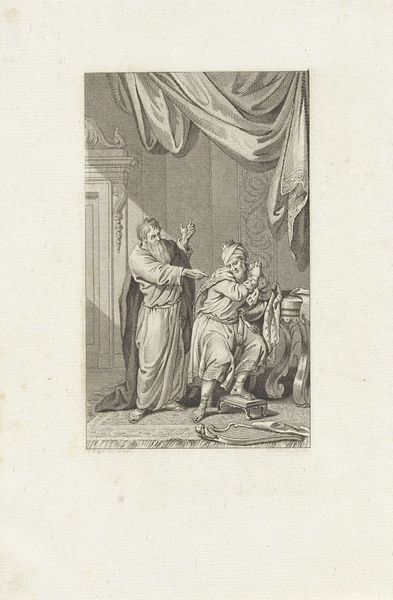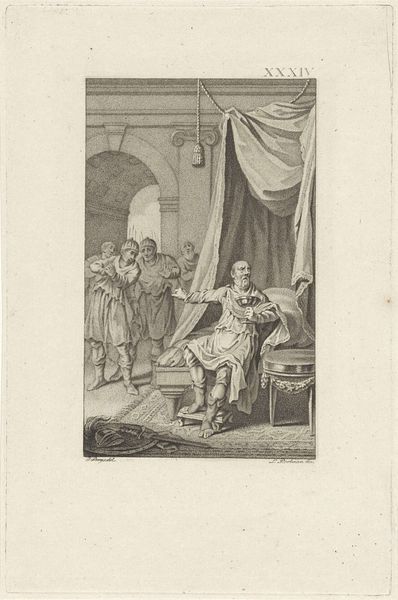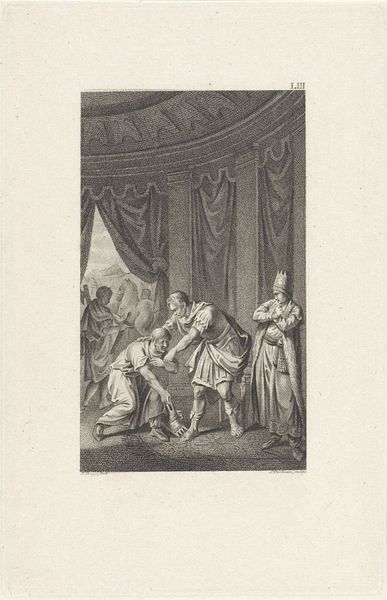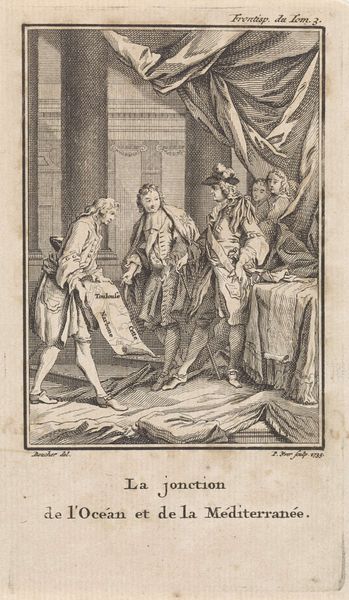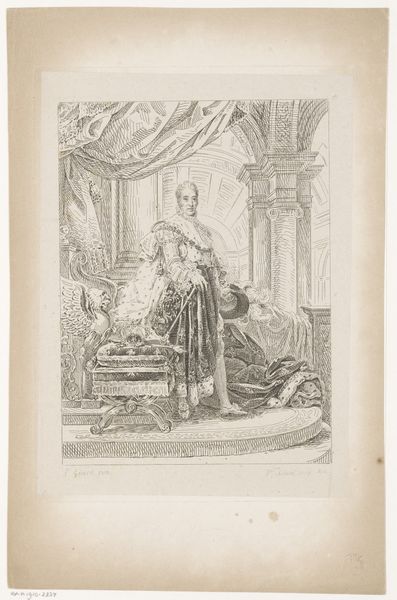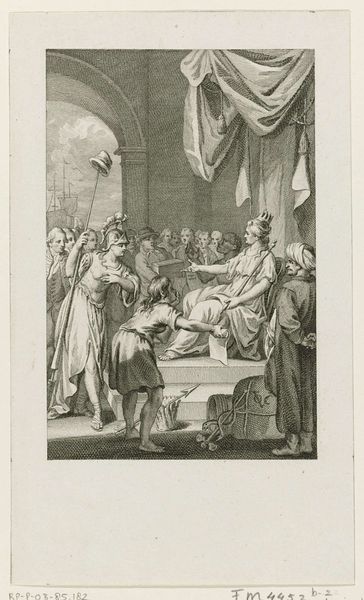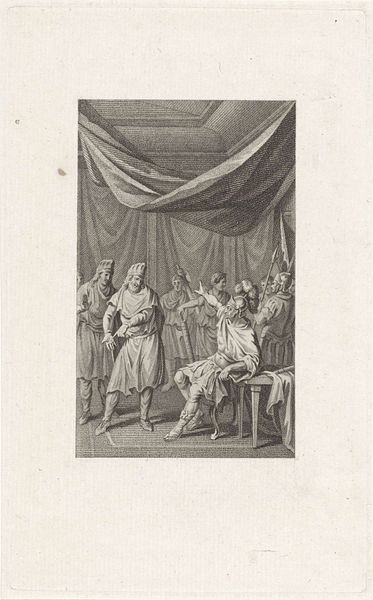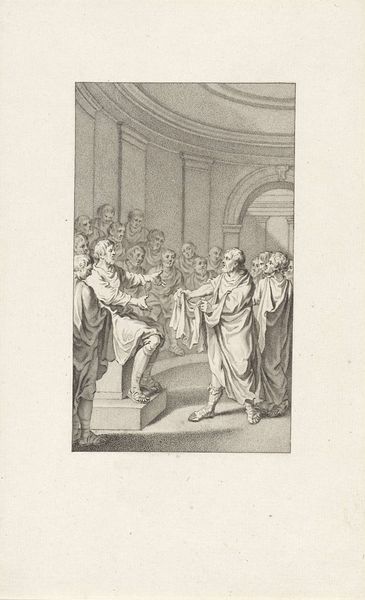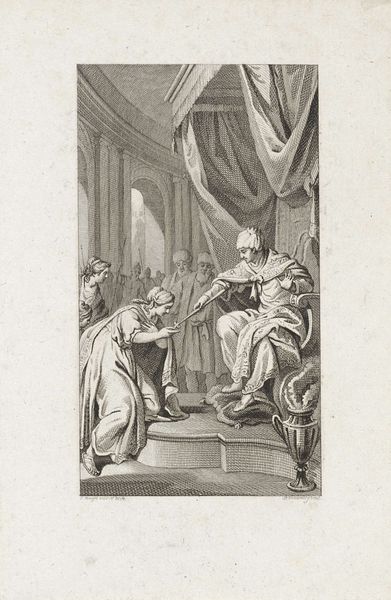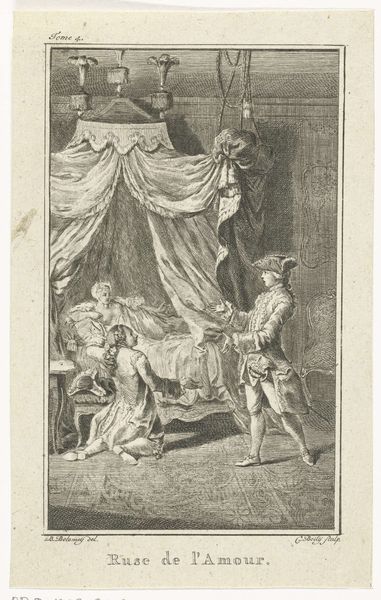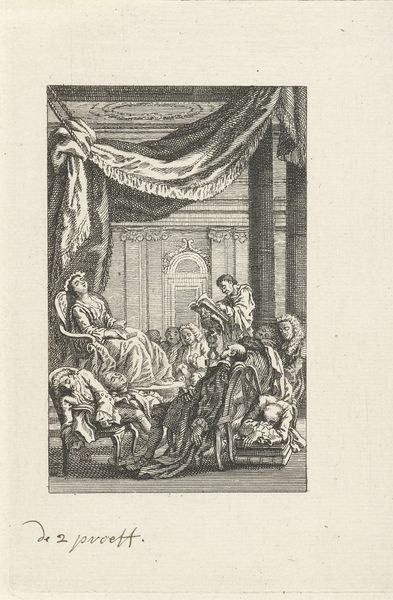
engraving
#
neoclacissism
#
narrative-art
#
figuration
#
history-painting
#
engraving
Dimensions: height 204 mm, width 131 mm
Copyright: Rijks Museum: Open Domain
Curator: Ludwig Gottlieb Portman created this engraving, "The Return of Scipio's Son," in 1796. It’s currently housed in the Rijksmuseum. Editor: Well, my first thought is...wow, what a sterile, repressed hug! It feels like everyone is acting out a feeling rather than actually feeling it. The neoclassical aesthetic is definitely strong. Curator: The piece clearly embraces Neoclassicism. Look at the controlled lines, the almost theatrical arrangement of figures, and the subject matter itself, drawn from classical history. It all speaks to the values of order, reason, and morality prevalent at the time. We should also acknowledge that this narrative celebrates a very particular brand of virtue – patriarchal honor upheld by acts of selfless male generosity. Editor: I guess I'm stuck on the emotions, or lack thereof. I mean, shouldn't a father seeing his son returned home after who knows what ordeal look… happier? It’s all so composed. Is this a story about reunion, or is it a history lesson about Roman stoicism? And the room! It looks more like a stage set. Where's the dust? The crumbs? The clutter? Curator: That's precisely Portman’s intention, I believe. He’s using the controlled setting and the figures' deliberate poses to communicate a particular message about Roman virtue and leadership, a narrative that would have resonated strongly in a Europe grappling with revolutionary change and searching for models of stability. It's worth thinking about who is left out from the narrative - women barely have any agency. Editor: Okay, sure, context matters. And thinking about it that way, perhaps the coldness is the point. It reflects the rigid social structures of the time, right? Even a joyful reunion has to conform to the rules, uphold the patriarchal system! Curator: Exactly! Thinking about power relations, and the ways history gets mythologized, illuminates so much about works like these. It makes you wonder about what stories don't get told in these visual languages. Editor: So, Portman is less a documentarian and more of a…propagandist of good manners? Even with that context though I can't help but wonder if that embrace has a touch of, you know, homoerotic subtext! But maybe my twenty-first century mind is going down the wrong tracks. Curator: Perhaps not entirely. What we read as tension today might resonate with different understandings of intimacy at the time. Ultimately, that possibility is part of the enriching experience of interpreting historical artwork! Editor: Alright, I'm starting to see it in a new light. A very calculated, politically loaded, stiff-hug kind of light. Thanks for walking me through that. Curator: My pleasure! There are always layers of interpretation, it's all about peeling back those layers, considering intersectional viewpoints, and never accepting a single, authoritative narrative.
Comments
No comments
Be the first to comment and join the conversation on the ultimate creative platform.

